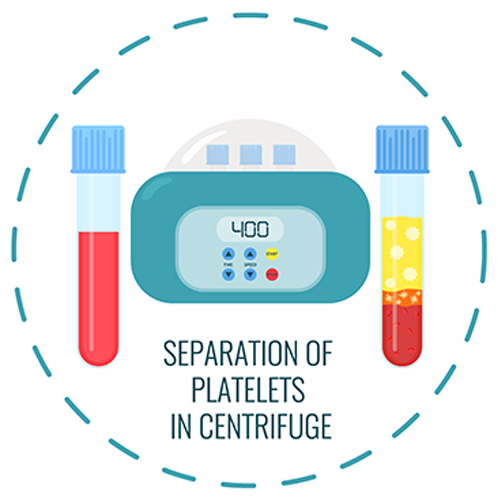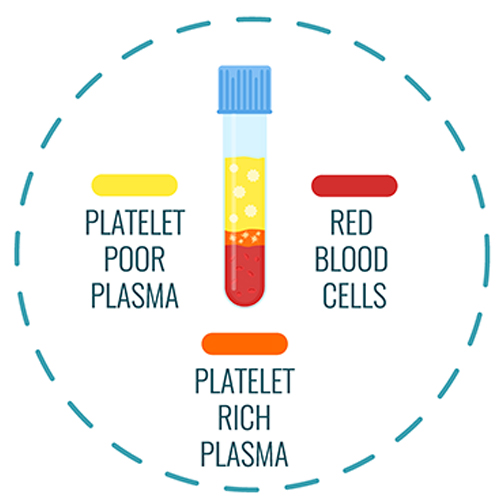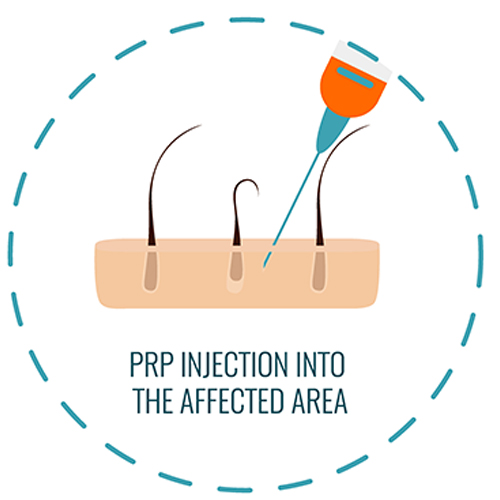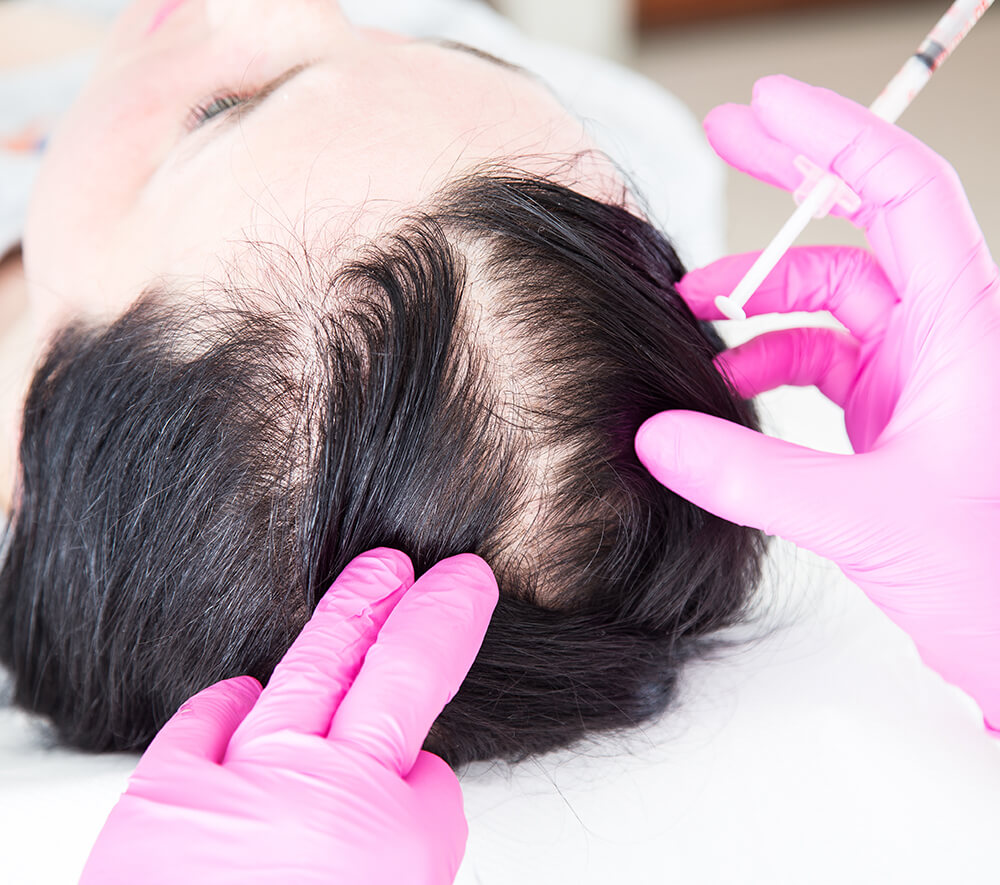
Platelet Rich Plasma Therapy
Prescription drugs and healthy nutrition are key elements to improving the overall state of your hair follicles. However, only provide a partial improvement, and some have many unwanted side effects. Platelet-Rich Plasma has allowed the impossible, now possible when it comes to improving, and sometimes saving your hair follicles. This fast injection of your own platelets into the vascular layer of your scalp can significantly help strengthen, and stimulate regrowth of your hair.
PRP for Hair Growth
- Improves blood supply to your follicle
- Thickens your hair shaft size (hair thickness)
- Stimulates and promotes the growth phase
- Balances the hair growth cycle
- Reduces hair loss
How PRP Works
Platelets contain numerous healing growth factors. A signal is sent by those growth factors to direct your tissue to regenerate. Many specialties of medicine use PRP to treat conditions that need tissue repair, and nutrition to support regrowth. Studies have demonstrated the power of PRP to produce stronger, and healthier tissue. The best part of this therapy is how your own bodies growth factors can help strengthen, and grow your hair.
Reversal of the miniaturization of the hair follicle and push dormant hair back into the growth stage has been an enormous breakthrough with PRP.
Important to note, that the process for collecting and separating plasma, has been approved by the U.S. Food and Drug Administration, injecting into the scalp to treat hair loss has not yet been reviewed.
PRP for Hair Loss: A treatment that can be accomplished in a fast, and easy three-step process.
Steps of PRP
BEFORE & AFTERS
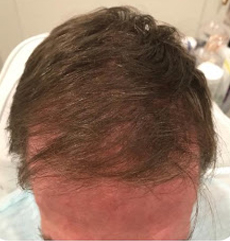
Before
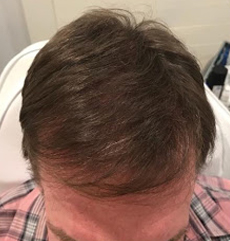
After
PRP Hair Restoration
Patient 1
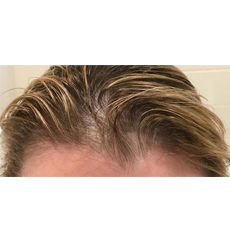
Before
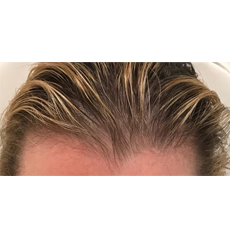
After
PRP Hair Restoration
Patient 2
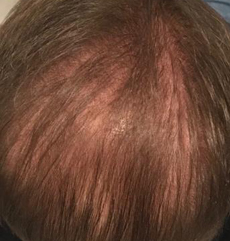
Before
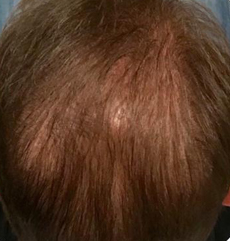
After
PRP Hair Restoration
Patient 3
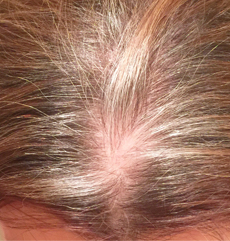
Before
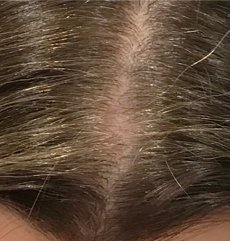
After
PRP Hair Restoration
Patient 4
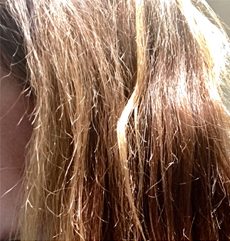
Before
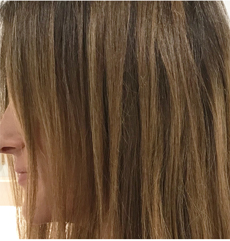
After
PRP Hair Restoration
Patient 5
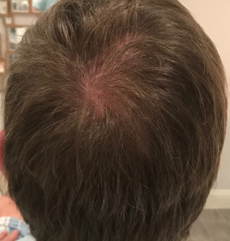
Before
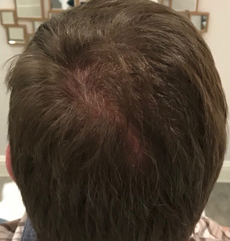
After
PRP Hair Restoration
Patient 6
FAQs
Am I a candidate for PRP?
Talk to your medical professional to determine the cause of your hair loss, and create a treatment plan.
Do I need several PRP treatments?
Most moderate to severe hair loss requires several initial treatments spread 3-4 weeks a part. After the initial series of treatments, depending on the diagnosis of your hair loss, and response to therapy will determine your maintenance frequency, majority will require 2-4 treatments per year.
When can I expect to see results?
- Initial Response Stage: Reduction of Shedding. (Notice by less hair in brush, drain, and clothes) (commonly 1-2 months)
- Secondary Response Stage: Increased rate of hair growth and thickness of hair shaft. (thicker, and improvement in length) (commonly 1-4 months of treatment)
- Third Response Stage: Stimulation of dormant follicles to regrow. (wide variations, 1cm per month for health follicles, commonly correlated with severity of condition, some may take 6 months to see improvement)
- Final Response Stage: Maintenance of healthy hair, and regrowth.
How long is the treatment?
The collection and process time takes a total of 15 minutes, and the treatment time is usually less than 5 minutes.
Are PRP treatments painful?
An effective anesthetic cold ambient air is used to reduce the discomfort from the injection. Most patients describe a sensation of “tightness” that can be reduced with massage methods during the procedure, and post procedure instructions. The treatment is fast, and the discomfort is tolerable. Discuss with your medical provider the best analgesic plan for you.
What Is the recovery time?
It is recommended to take a warm shower within a few hours from your treatment. Further, recommended to not undergo any harsh dyes or chemicals on your hair for 48 hours. Otherwise there is no downtime after PRP treatments.
Can PRP cure baldness?
PRP is NOT a cure for baldness. Patients with shiny areas of complete hair loss will not regrow hair in these areas. PRP is indicated for thinning, and hair growth cycle stabilization. Commonly, PRP can help treat the causes of these disturbances, and provide the ability for everyone to reach their healthiest hair potential.

